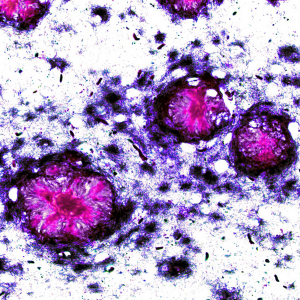Recently, Luke reported that I am a carrier of the E4 allele at the gene APOE; this gives me approximately double the average risk for late-onset Alzheimer’s disease. I didn’t think too much about this–it’s only double the risk, and in any case I’m 28 years old. But I recently came across the below plot, by Nick Eriksson (I’ve re-plotted it). It shows the frequency of the APOE4 allele plotted against average age in 15 cohorts of “cognitively normal elders” (data from here).

If we assume that these 15 cohorts are all from relatively similar populations, the interpretation of this is that, between the ages of 70 and 85, people with my genotype go from being cognitively normal elders to not (due to Alzheimer’s, another form of dementia, or death) at a rate about twice that of people who don’t carry the E4 allele [1]. This, of course, is exactly what I knew before (that E4 carriers have double the risk of Alzheimer’s), but seeing this visually is quite striking.
[1] Could the drop in APOE4 allele frequency could be mostly due to E4/E4 homozygotes (i.e. people not of my genotype)? If we assume an initial allele frequency of 20% and Hardy-Weinburg equilibrium, then a fifth of the APOE4 alleles are present in homozygotes. So even if all of these individual developed Alzheimer’s, then this would drop the allele frequency from 20% to ~16%. The observed drop in allele frequency is much greater than that.

 RSS
RSS Twitter
Twitter
Recent Comments